Fixed: Laptop brightness control is missing from Windows Control Panel.

Some users complain that there is no brightness setting on their PC, which is a frustrating problem since most users adjust the laptop screen brightness while working, watching a movie, etc. In this article, we will guide you on how to fix the Windows brightness control missing issue on your laptop.
Note: If you are using an external monitor with a laptop, the brightness controls will not work or will be missing. When the laptop screen is active, you should see the brightness slider. It is best to use a hardware button or OEM software to control the monitor’s display.
The lack of brightness control in laptops can be due to a number of factors.
The taskbar and action center often undergo changes in new versions of Windows. However, the brightness slider should still be available there. Possible reasons why the brightness slider might not be available in Windows include:
- Disabled Monitor Driver in Device Manager: This prevents Windows from using newer drivers that do not support this method of dimming.
- Old graphics drivers. Using outdated or outdated graphics card drivers may cause instability in brightness adjustment, so it is recommended to install the latest drivers as soon as possible.
- There are no more brightness settings in the Notification Center: something or someone may have disabled this option, and all you have to do is turn it back on in the settings.
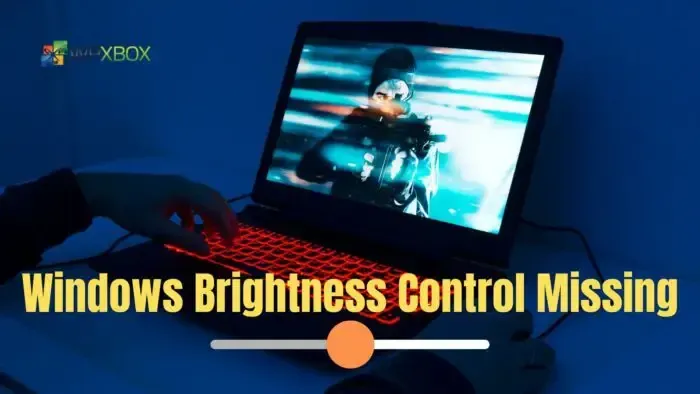
Fixed: Notebook lacks Windows brightness control.
- Add brightness slider to Notification Center
- Enable adaptive brightness with the power feature
- Enable Display Control Panel via Group Policy
- Enable Display Control Panel via Registry
- Install and update the display driver (via OEM software)
1] Add Brightness Slider to Notification Center
You can add a brightness slider via the Notification Center in this method. Here’s how to do it:
- On a Windows PC, click the Action Center in the lower right corner.
- Click the edit button (pencil icon) to add a brightness slider.
- Click the Add button and add a brightness slider from the context menu.
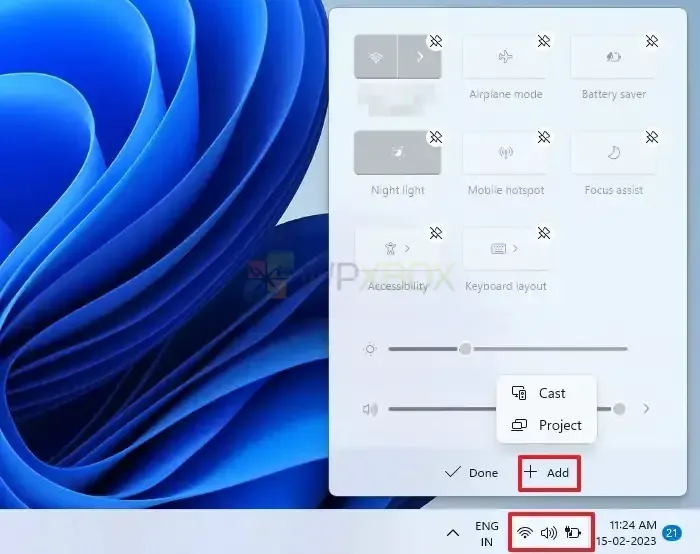
Related: Fix: Unable to adjust monitor display brightness
2] Enable adaptive brightness with power feature
If Windows brightness control is causing you problems, turning on the adaptive brightness feature may help. This feature uses light sensors to change the brightness of the monitor according to the environment. You can enable this feature by following the instructions below.
- In the Windows search bar, type a power plan and click the Choose a power plan button.
- In the “Choose or customize a power plan “section, click “Change plan options” under any plan.
- On the next page, click “Change advanced power settings”.
- In the Power Options window, scroll down, find and expand the Display option. Then expand Turn on adaptive brightness.
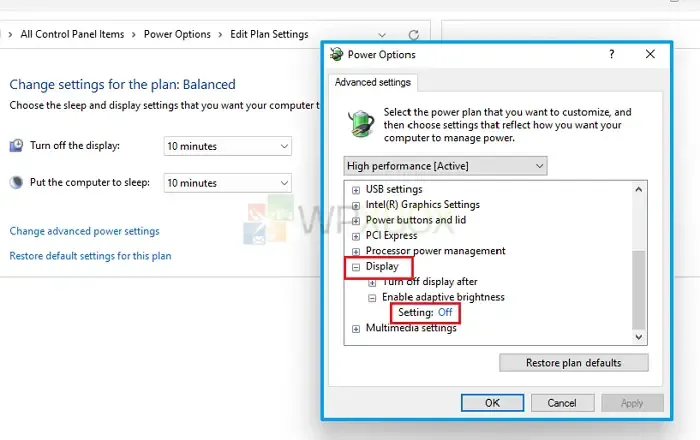
- When your computer is using battery power, click On Battery, then select On Battery. ” or “ Off” from the list to turn adaptive brightness on or off.
- When your computer is plugged in, select Connected and then On. ” or “ Off” in the list to turn adaptive brightness on or off.
- Click Apply and then select OK.
You can also tweak this by going to Settings > System > Display > Brightness, and then unchecking Help improve battery life by optimizing displayed content and brightness .
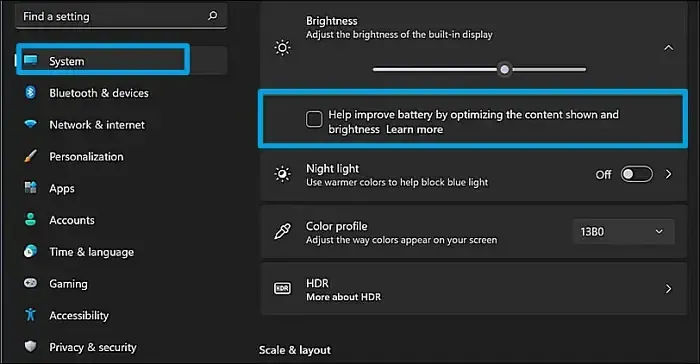
3] Enable Display Control Panel via Group Policy
This method enables the “Display”setting using the Local Group Policy Editor. It would be helpful if this option was disabled in some other way.
- Open the Group Policy Editor. If you have Windows Home, you can install Group Policy and open it.
- Click Administrative Templates under User Configuration in the left pane of the Local Group Policy Editor window.
- Expand Administrative Templates and click Show.
- Double-click the Turn off the display control panel option.
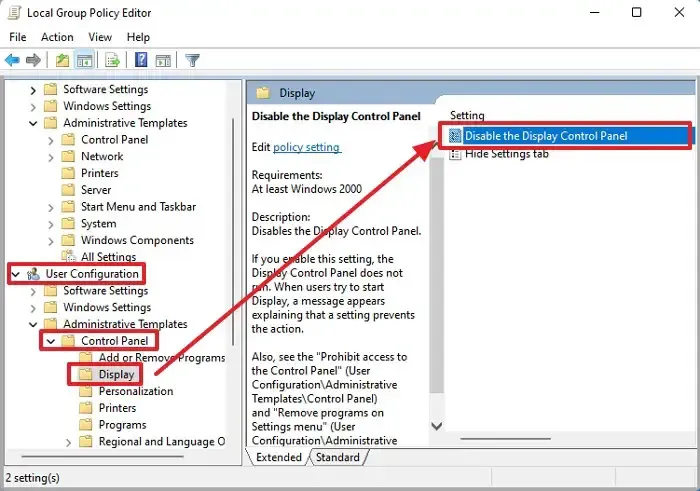
- In the pop-up window, select the Disabled option and click OK to close the window. The display control panel will be enabled.
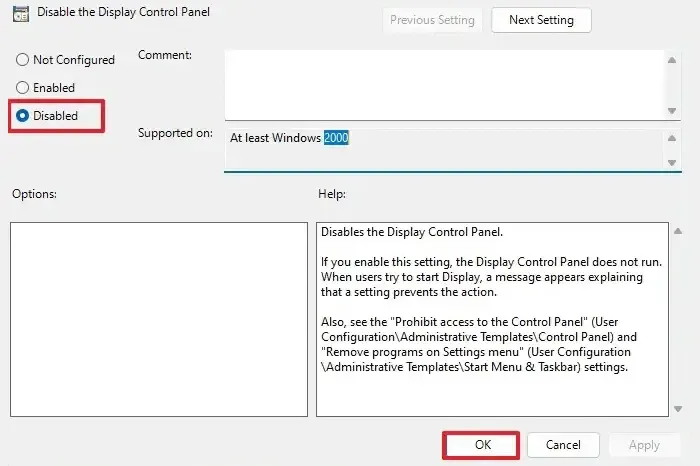
Restart your computer and check if the display control panel is available in the action center.
4] Enable Display Control Panel via Registry
The Windows Registry is the database where Windows and other applications store their configuration and settings. In fact, any changes made through Group Policy are also reflected in the Registry.
This is a critical database, so we recommend that you create a system restore point before making any changes. In case of any unforeseen event, you should be able to recover it.
- Open the registry editor (type regedit in the Run box and press the Enter key).
- In the Registry Editor window, navigate to the following path:
HKEY_CURRENT_USER\Software\Microsoft\Windows\CurrentVersion\Policies\System
- Find the NoDispCPL value in the right pane and double-click it.
- Type 0 in the Value field, then click OK.
Close Registry Editor, restart your computer and check if the issue is resolved.
5] Install and update the display driver (via OEM software)
Keeping your drivers updated is critical to avoid compatibility issues that could prevent your PC from working properly. If the missing brightness slider is caused by a corrupted or outdated driver, updating it should fix the problem.

You can visit the GPU OEM site and download the software assistant from their website. This can then check the GPU model and your version of Windows and install the correct driver for the PC.
6] Hardware keys and brightness control software
- Use the hardware keys on your laptop keyboard. On most laptops, you can change the brightness using certain keys on the keyboard.
- Use Nirsoft software: You can download this software or add it as an extension to your browser to change the brightness of your PC.
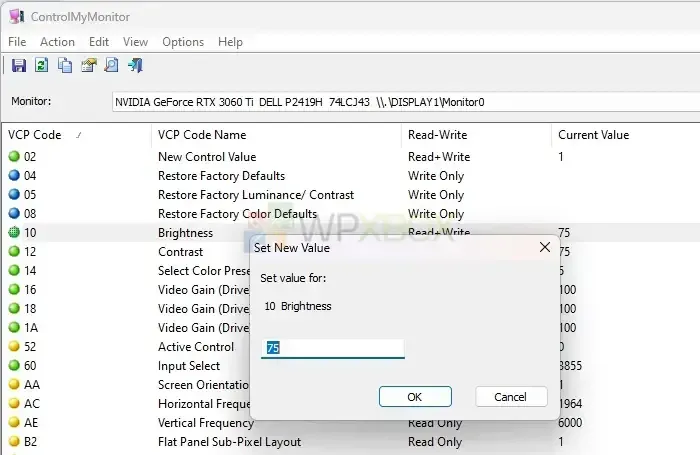
Conclusion
It is difficult to work at the same brightness level all day long. Depending on the illumination on the street, you have to adjust the brightness up or down. The brightness control slider is useful for instantly adjusting screen brightness without navigating through settings or software.
However, the brightness slider may disappear from the Windows notification area due to a system error. This problem is not too critical and can be solved with a few simple workarounds. The solutions listed above will allow you to quickly fix the missing brightness slider issue in Windows.
Leave a Reply